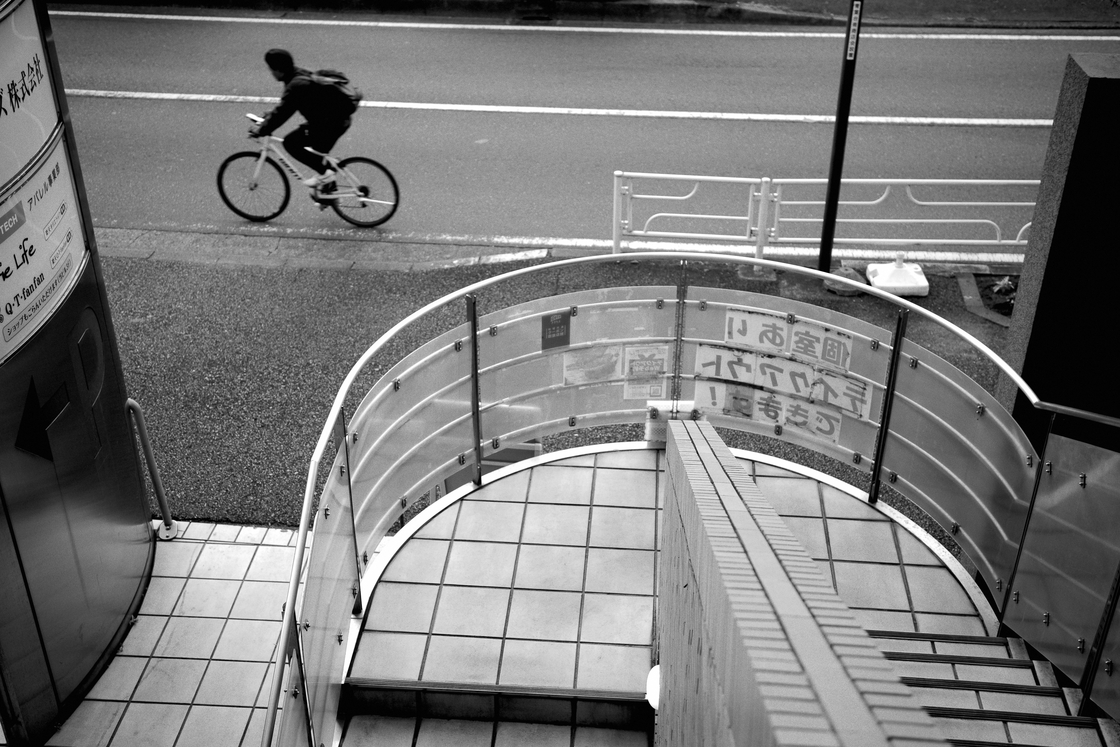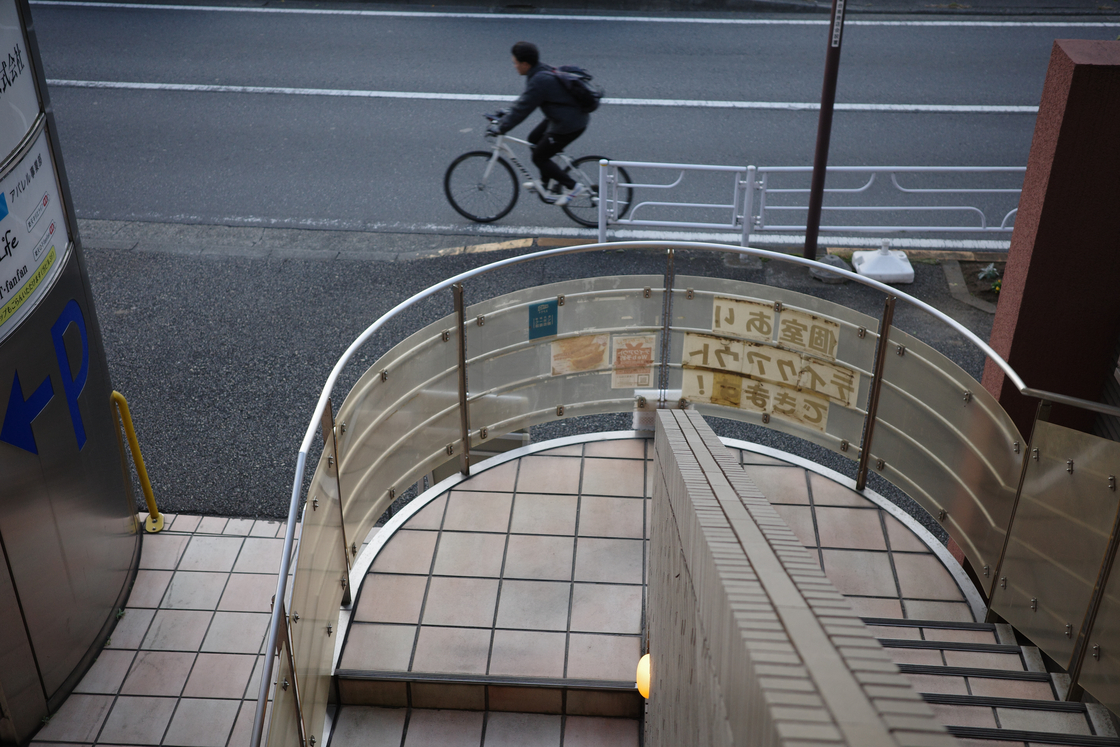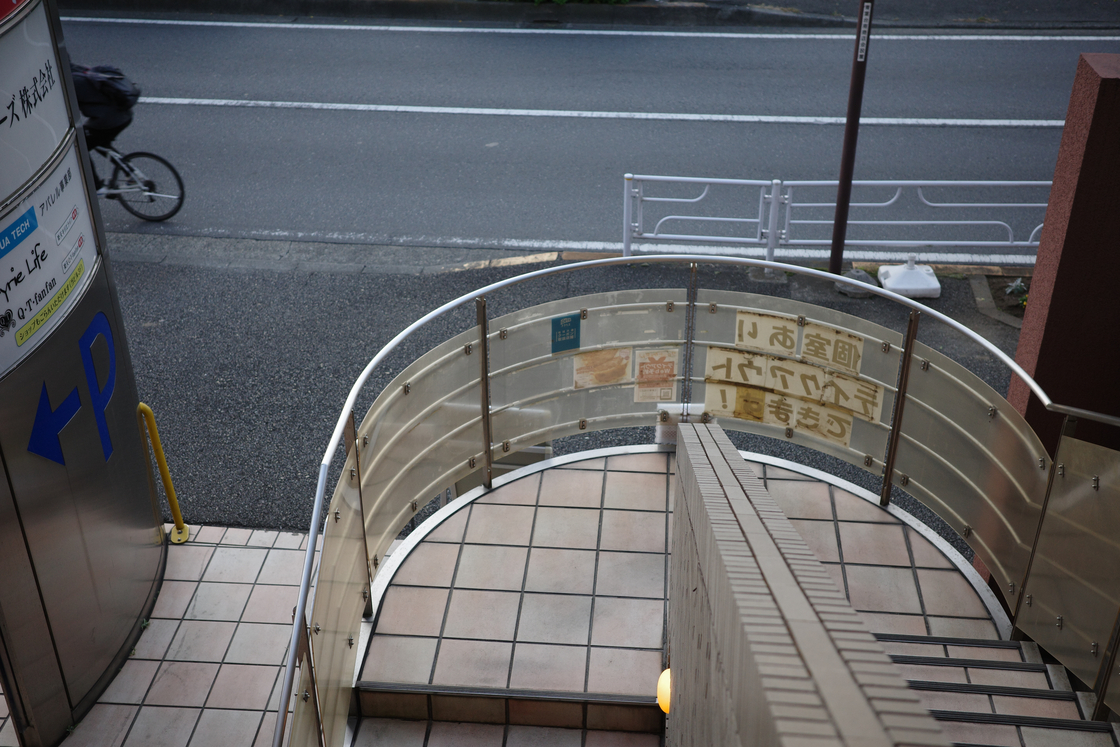(Translated from the original post on December 9, 2021)
Continuing from my previous article, this is the second in a series of my “Daring to be Daring” project, in which I try to photograph based on the works of the masters of snapshots.
One of Henri Cartier-Bresson's works (click here), he captures a bicycle passing through a cobblestone alley from the top of a staircase. It was taken in Hyères in the south of France, and I took the following photo in honor of this historical masterpiece.

GRIIIx, P mode, 1/250s, F2.8, ISO400, Snap Focus, pinned at 5m and shot continuously.
The geometric beauty of the composition of the original work is what makes it unique, but don't ask me about that.
In the photo above, the view is limited because the left and right sides of the shooting point are blocked by buildings. It must take a great deal of concentration and reflexes to hold a camera in a narrow field of view, wait for a bicycle to arrive, and shoot in one stroke. Being lazy, I used the continuous shooting function to select one out of five or so shots
Looking again at Cartier-Bresson's work, the staircase is surrounded by the exterior walls of the buildings, so the field of view is narrow. The visible area is probably less than 10 meters from one end to the other.
The question arose as to how he could have foreseen the moment the bicycle would cross in such a narrow field of view.
Now, my guess (or delusion?) is that Cartier-Bresson was not waiting for that moment at the top of the stairs; he was at the turn of the stairs, or possibly on the street, until just before the photo was taken.
- He spots a cyclist coming toward him on the street
- Dashes up the stairs
- Instantaneously(!) composes the picture and focuses on the viewfinder
- The next moment he sees the front wheel in the viewfinder, he gently releases the shutter
The result of these actions in a few seconds is the picture that is still talked about today as the model of how to compose and take a good shutter opportunity.
This work at Hyères was taken in 1932. Cartier-Bresson was born in 1908, which means he was 23-24 years old. With young Henri's stamina and passion for the decisive moment, it was no big deal for him to run up that twisty, crooked staircase.
My theory is not so bad, right? What do you think?


Here are the frames just before and after the photo above, demonstrating that the GR IIIx shoots continuously at 4.2 frames per second, which shows that there is this much movement going on in less than a second.
Cartier-Bresson's Leica, of course, did not have a continuous shooting function. His ability to complete that composition in a single shot is simply divine.
(ARA)














